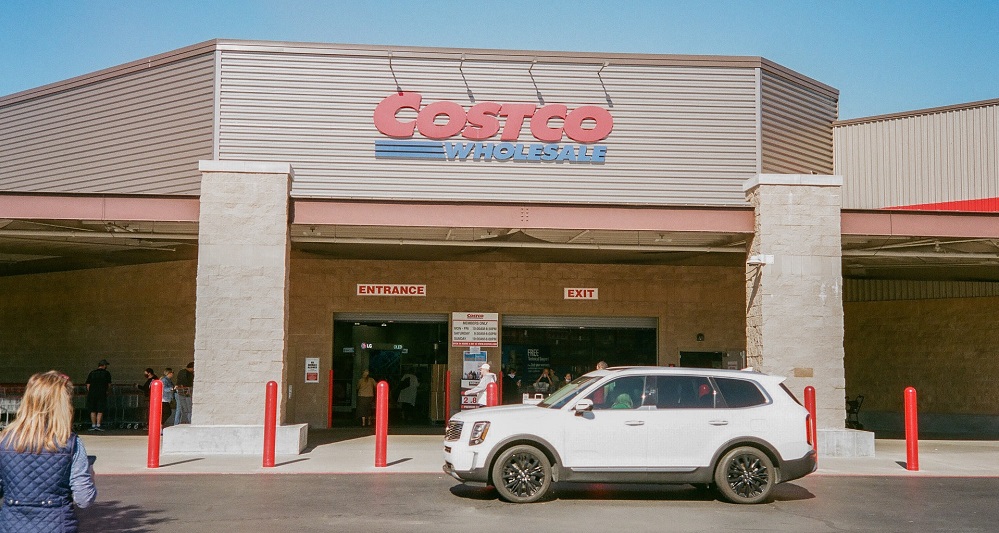On Wednesday May 4, 2022 Marriott International, Inc. (MAR) posted better-than-expected revenues of 4.2bn surpassing the consensus estimate of $4.15bn or by +1.2% and in the same direction as Advan's forecasted sales. The revenue was up 81% YoY and in line with Advan's foot traffic data increase of 35% YoY at its properties for Q1 2022. As a result of beating the sales and EPS the stock closed at $181.24, +4.7% from previous close. Advan's footfall data has a correlation of 0.92 on a YoY basis with MAR's top-line revenue over the last 13 quarters.
TikTok’s users aren’t the only ones singing DJ Khaled and Migos’ “major bag alert” in 2022. Since TikTok introduced TikTok for Business, advertisers have been investing massively in the platform that has quickly become a household favorite among Gen Z users. To that point, Pathmatics data shows that the top 10 advertisers on TikTok have spent more than $126 million on the platform between January 1 and May 1, garnering over 12.6 billion impressions. Let’s dive into the top advertisers on TikTok by ad spend and how they are building engaging ad content on the app to target their audiences.
The Dodge Momentum Index (DMI) moved 6% higher in April to 164.8 (2000=100), up from the revised March reading of 155.0. The Momentum Index, issued by Dodge Construction Network, is a monthly measure of the initial report for nonresidential building projects in planning shown to lead construction spending for nonresidential buildings by a full year. In April, the commercial component of the Momentum Index rose 9%, while the institutional component moved 2% higher.
Home prices rose a whopping 20% over the past year and rents on single-family homes were up 13%, according to the CoreLogic national Home Price Index and Single-Family Rent Index. With prices up more than rent, is it a sign that homes are overvalued? Price growth that outstrips rent gains over an extended period could be a sign that homes are overvalued if capitalization rates, otherwise called cap rates, had remained unchanged. A cap rate is used by real estate professionals to convert net operating income on an investment property into a market value.
Amazon reported disappointing earnings last week, noting overcapacity in its supply chain as online retail sales fell and the company issued disappointing guidance for next quarter. In today’s Insight Flash, we dig into some of the dynamics behind the report, including looking at return purchase behavior for those who started shopping for products sold by Amazon.com during the COVID-19 pandemic versus earlier cohorts, where Amazon.com shoppers have been spending instead, and what US trends look like by income and age demographics.
The latest air ticketing data from ForwardKeys reveals that Russian outbound tourism, already severely handicapped by pandemic travel restrictions, has fallen even further, because of Russia’s military operations in Ukraine. But affluent travellers are still flying, just not to Europe. In the week before the outbreak of war (w/c 18th Feb), outbound international air tickets from Russia stood at 42% of pre-pandemic levels; but in the week immediately after the invasion (w/c 25th Feb), issued air tickets fell to just 19%. Since then, flight bookings have sunk deeper still and have been hovering at around 15%.
In our most recent white paper, we took a closer look at the grocery sector. We examined how the recent economic shifts are impacting the industry and how consumer attitudes are changing two years into the pandemic. The grocery sector was widely considered one of the most resilient retail segments during the pandemic’s early period, and the strength continued in 2021. Year-over-year (YoY) and year-over-three-year (Yo3Y) foot traffic remained strong throughout much of last year, with Yo3Y performance peaking in July 2021 at 12.5%.
The gaming community has been familiar with the concept of ‘the metaverse’ with ROBLOX being the largest mainstream example today — ranking #1 for global consumer spend on mobile in 2021 and garnering over $4.5 billion in app store consumer spend as of Mar 31, 2022 to date — a testament to its widespread popularity. However, the concept of the metaverse extends beyond gaming. While the idea of shopping, marketing, and interacting with others in a virtual world may not be mainstream yet, tech giants like Meta (Facebook) are seemingly leading the charge and consumers and brands in other sectors are quickly jumping on board
Wholesale clubs experienced a sales boost early in the pandemic, as consumers rushed to stockpile pantry essentials and household goods. But how have wholesale clubs fared two years after the panic-buying rush? We looked at a few of the major wholesale club competitors—Costco Wholesale (NASDAQ: COST), BJ’s Wholesale (NYSE: BJ), and Walmart-owned Sam’s Club—to see how consumer spending has changed at these retailers. In addition to some wholesale clubs continuing to see strong growth in sales and average spend per customer throughout the pandemic, we also found that fuel sales through wholesale clubs skyrocketed in March 2022.
Pay transparency laws have become an increasingly popular tool to battle pay discrimination like the gender pay gap. Colorado implemented a policy requiring disclosure of salary ranges in job postings under the “Equal Pay for Equal Work” Act on January 1st, 2021. Other places, notably New York City, whose pay transparency policy was to be enacted starting on May 15th, 2022 but was postponed to November following pushback from businesses, are following suit.
In this Placer Bytes, we dive into the COVID recovery of two leading brands in their respective categories – Planet Fitness and AMC. The COVID surge in January may have caused Planet Fitness to miss out on its seasonal January boost, but the fitness leader’s more recent visit data has once again disproved the skeptics. Since February, visits have been on the rise, with March visits coming in far ahead of pre-pandemic levels.
According to a study by market research firm Mordor Intelligence, the global apparel market is forecasted to record a CAGR of 5.5% between 2020-2025. For apparel and accessories brands, this growth means ad spend increases as well as shifts in spend across formats as brands look to target their ideal buyers. It’s important to note that supply chain, sustainability and authenticity, and diversity representation will be sure to alter the apparel landscape, and subsequently, the advertising outlook in 2022.
If you are a homeowner living in California, Florida or parts of Missouri and have not already had installed solar panels or new roofing with a PACE loan, there is still a good chance that you know a friend or neighbor who has, or you’ve been pitched by private contractors selling PACE. PACE is an abbreviation for Property Assessed Clean Energy. As the name indicates, PACE provides financing for green and renewable energy home improvements, although it is not limited to such. Retrofitting properties with energy upgrades is costly, and PACE provides incentives such as 100% long-term financing.
As tech stocks cool off, the WSJ found speculative NFT investments are doing the same. Looking at market trends in Apptopia, we see net new installs of Veve Collectibles, an NFT marketplace and showroom, are down 99% since their high in mid-November. In-app purchase revenue for the app is down 90%. What are people purchasing on Veve? They're acquiring gems (the app's currency) which can then be exchanged for NFT collectibles on sale through the app.
In this Placer Bytes, we look at recent foot traffic patterns for David’s Bridal, the go-to destination for many brides-to-be across the nation, and for Bed Bath & Beyond, a popular choice for wedding registries. As life returns to normal in states across the nation, 2022 is shaping up to be a huge year for weddings. Gradually waning cases of COVID mean that couples can plan their big day with a lot more certainty than in 2020 and 2021. Enter David’s Bridal, the nation’s leading bridal dress retailer.
In an era where data-driven decision making and business intelligence are becoming increasingly important, businesses and investors are perpetually seeking faster ways to gauge what is going on in the market and how to better position themselves for success. One way to achieve this is to leverage alternative data sources such as e-receipts data. In this article, we will explore how e-receipt data can be utilized to help further business intelligence or facilitate the investment process when it comes to arriving at predictions.
National home prices increased 20.9% year over year in March 2022, according to the latest CoreLogic Home Price Index (HPI®) Report . The March 2022 HPI gain was up from the March 2021 gain of 11.1% and was the highest 12-month growth in the U.S. index since the series began in 1976. While home price growth is expected to slow over the next 12 months, the CoreLogic HPI Forecast shows that the year-over-year change in the HPI will remain in the double digits for the rest of this year.
As rising input costs threaten margins, several Limited-Service restaurants have been forced to hike prices. Chipotle noted on its recent earnings call that a 10% y/y increase in prices had resulted in minimal impact on demand, with same-store sales growing 9%. In today’s Insight Flash, we look at how Chipotle compares to the broader industry, focusing on how its demographics have responded to more expensive meals.
As a market, Apptopia estimates the top six teen banking apps in the United States have seen downloads fall 26% year-over-year in the first quarter. Monthly active users have fallen alongside, but this is mostly due to the two largest players, Step and Greenlight, slowing growth while their competition has strengthened. Over the past five years or so, the explosion of financial tech (fintech) products and the importance consumers are placing on financial education have increased.
In this Placer Bytes, we use foot traffic data to dive into two opposing sides of the driving landscape – Wawa and Tesla. Wawa recently announced plans to double its current store base over the next 10 years. At present, the convenience store and gas station chain operates 965 stores across Pennsylvania, New Jersey, Maryland, Virginia, Florida, D.C, but according to an interview by CEO Chris Gheysens in the Philadelphia Business Journal, the company aspires to operate 1,800 locations by 2030 with a focus on existing markets and filling in the gap between Florida and Virginia, including North Carolina.































































